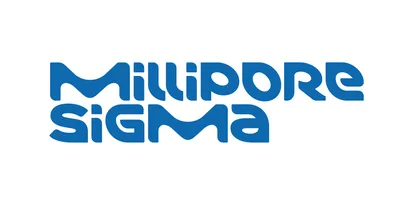Like a chef using a knife, a scientist needs pipetting skills. A seasoned chef may be able to cut a carrot into ribbons, seemingly without a thought, but it never hurts to keep some pipetting guidelines in mind—no matter how experienced the scientist. Here, three experts offer their top tips.
Top tips for pipetting
“One must be careful to have the right technique when manually dispensing liquid,” says Magali Gaillard, senior manager, portfolio management, MLH Business Line, Gilson (Villiers-le-bel, France). “Some of the most common pipetting errors are related to the careless use of pipette tips, inconsistent rhythm or timing, and improper handling of the pipette.”
Sometimes, a scientist even selects the wrong pipette. As Rishi Porecha, global product manager at Rainin Instruments (Oakland, CA), says, “Some common errors in pipetting include not using the correct volume pipette for a specific task and using an air-displacement pipette to handle nonaqueous liquid.” With viscous fluids, a positive-displacement pipette should always be used.
Before getting to specific pipetting procedures, some general concepts should be considered. “Each time pipette users begin work for the day, they should consider what experiment they are doing, what liquids they are working with, and what throughput they desire prior to selecting a pipette,” Porecha says. “Realistically, no lab has all the pipettes that a user might desire, but if a user takes a look at what tools are available in the lab and department, they might get a better idea of what existing pipettes to implement in an assay or of what pipettes they might want to purchase.”
The features available in today’s pipettes extend beyond the device itself. Advances in liquid handling have made it possible for users now to connect their pipette to the cloud. With this connectivity, a user can download protocols or create custom ones. Pipetting data can even be captured in the cloud, which is one way to identify any missteps and enhance the pipetting process, especially by tracking the ongoing accuracy, or lack of it.
With the right equipment in hand, the next challenge is getting the steps right.
Steps for proper pipetting
With an air-displacement pipette, the following steps increase the likelihood of accurately and repeatedly measuring a specific volume:
- Set the volume on the pipette.
- Depress the plunger.
- Immerse the tip to the correct depth, which can vary by the pipette and tip, and smoothly let the plunger go to its resting position.
- Wait about one second for the liquid to flow into the tip.
- Put the pipette—held at 10–45 degrees—against the wall of the receiving chamber, and smoothly depress the plunger to the first stop.
- Wait one second and then depress the plunger to the second stop.
- Slide the tip up the vessel wall to remove the pipette.
- Allow the plunger to return to its rest position.
An electronic pipette automates some of these steps. Electronic pipettes typically feature a digital display to adjust volume and a motorized piston for aspiration and dispensing that effectively does all the work. “They also come with useful preset programs and custom modes, where researchers can rapidly create their own protocols,” Gaillard says.
To learn even more, online tools for pipetting training can help. They make great training guides for beginners and refresher courses for experts.
What are the common mistakes when pipetting?
Sometimes, seemingly simple steps turn an accurate process into a mess. In pipetting, it doesn’t take much to make the results totally unreliable.
Urska Cepin, principal application scientist at BioSistemika, provides a list of common problems and solutions:
- For uneven piston movement, clean and lubricate the piston.
- To prevent heat transfer from hand to pipette, pay attention to how you are holding the pipette.
- If pipette tips leak, be sure to use original or recommended tips.
Even if an error in use seems small, the impact can be significant. If the tip is not seated properly, for example, leaking can reduce pipetting accuracy by 0.5 percent to 50 percent.
Following the basic steps to accurate pipetting goes a long way toward improving the process and the results, but a few more advanced tips should also be followed. “For one thing, prerinsing tips increases the uniformity of volumes aspirated and dispensed. Even the method of adjusting a pipette can matter. “Setting volume through a clockwise adjustment is recommended for improved precision,” Gaillard notes.
Beyond the tools and techniques, it’s just as important to keep the user properly “tuned.” The process of pipetting takes a toll on mind and body. So a scientist should do everything possible to make the experience as pleasant and comfortable as possible.
“Pipetting ergonomics play a big role in accuracy,” Gaillard explains. “You must be in a comfortable, appropriate posture, with all the most frequently used objects in front of you.”
Plus, taking a break makes a real difference. As Gaillard explains, it is advisable to let go of the pipette from time to time and take a break. In cases where large amounts of pipetting are required, such as repetitive processes in microplates, purchasing an electronic multichannel pipette could be worth the investment.
Given the amount of pipetting done in modern labs, investing in tools and techniques makes as much sense as does a chef buying an amazing knife, keeping it sharp, and using it properly.
Key Learnings About Pipetting
Importance of Proper Technique
Master accurate pipetting by using the correct depth, rhythm, and plunger control to ensure consistent results.Choosing the Right Pipette
Match the pipette type (air-displacement or positive-displacement) to the liquid’s properties, such as viscosity, for optimal accuracy.Avoiding Common Errors
Prevent pipetting issues like leaking tips or uneven piston movement by using recommended tips and maintaining the equipment.Advanced Tools Enhance Precision
Leverage electronic pipettes and cloud-connected tools to automate processes, track accuracy, and customize protocols.Ergonomics and Comfort Matter
Adopt a comfortable posture, organize tools for accessibility, and take breaks to reduce strain during repetitive pipetting tasks.Tips for Better Results
Prerinse tips for consistent volumes, adjust the pipette clockwise for precision, and clean and lubricate pistons regularly.Continuous Learning and Resources
Explore guides, webinars, and training tools to refine your pipetting skills and stay updated on advancements.
For additional resources on pipettes, including useful articles and a list of manufacturers, visit www.labmanager.com/pipettes










